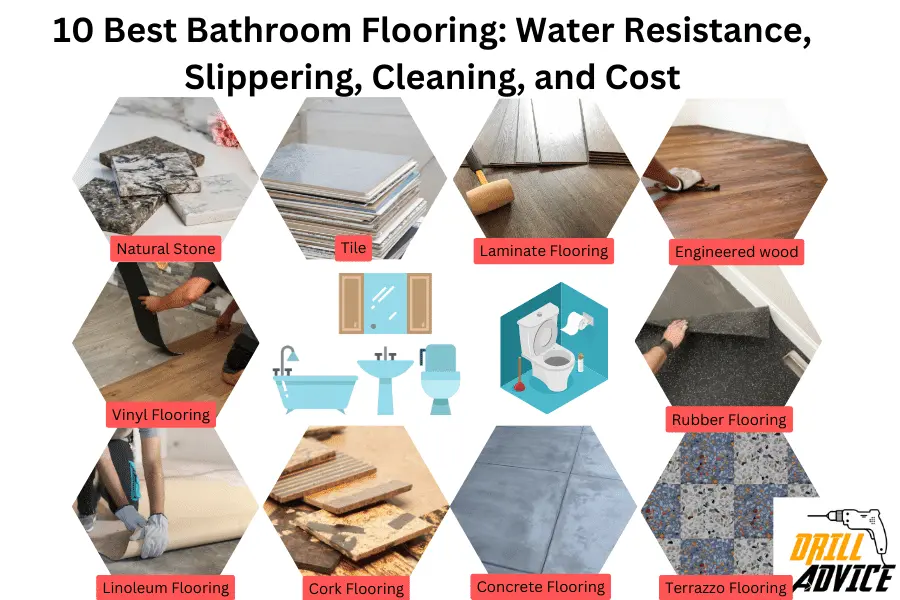
Bathroom flooring is a material layer used on the bathroom floor in order to reduce the water absorption to the structure, prevent user slippering, and increase user hygiene.
Bathroom is covered by these 11 best materials such as natural stone flooring, tiles, laminate flooring, engineered wood, vinyl flooring,cork, concrete flooring, rubber flooring, linoleum, terrazzo, and ceramic or porcelain tiles.
Before you choose a bathroom flooring, you should consider the waterproofness, dampness, slip resistance, stain resistance, cleaning, maintenance, cost, and aesthetic appeal.
The bathroom floor can be damaged due to water leaking, wear and tear, chemical damage, thermal stressess, structural issues, humidity, and moisture.
The bathroom floor can be protected by using proper cleaning liquids, using bath mats, proper ventilations, preventing water leaking, proper grout sealing, using anti-slip treatment, and applying protective coating on the floor.
What are the 6 Considerable Factors Before Choosing a Bathroom Flooring?

Before choosing a bathroom floor, you should consider these 6 important factors. Those are higher waterproofness of the material, minimum dampness, higher slip resistance, minimum cleaning and maintenance, less cost, and higher aesthetic appeal.
- Higher Waterproofness – Higher waterproofness of the bathroom flooring will prevent the leaking of water inside the structure or slab. It will prevent dampness and stains on the floor, walls, and slabs.
- High Slip resistance – The bathroom floor is always a wet area. Hence users can slip on the floor at any time. As a result of this, the floor should be textured and have higher slip resistance.
- Minimum Dampness – Due to the water is leaking through the flooring the floor, slab, and wall can get wet. When this a occurs a long time surface will be a damped surface, and fungus algae will be grown. This will affect the aesthetic view of the structure.
- Lower Cleaning and Maintenance – The bathroom floor should be cleaned and maintained daily in order to maintain aesthetic appeal and hygiene. If the bathroom flooring is not clean regularly, there will be stain marks on the floor and wall.
- Less cost – The bathroom floor should be less costly and it should affordable to your budget.
- Aesthtic appeal – Bathroom flooring should be, match your personal perferances and needs.
Read More About
- 7 Types of Bathrooms: Suitability, Includance Pros and Cons
- 9 Best Bathroom Shower Types: Pros, Cons, Size and Considerable Factors
What are the Best 11 Bathroom Flooring?
1. Natural Stone Flooring

Natural stone flooring is a popular choice for bathrooms due to its durability and timeless appeal. There are several types of natural stone that can be used for bathroom flooring, including marble, granite, limestone, and slate.
Natural stones have a low water absorption rate, which means it is less likely to be affected by water damage or develop mold and mildew. This is especially important in bathrooms where there is a lot of moisture present.
Slipper resistance is another important factor to consider when choosing bathroom flooring. Natural stone, particularly textured varieties like slate, provides good slip resistance. This helps to prevent accidents and ensures safety, especially in wet areas like the bathroom.
Cleaning and maintenance of natural stone flooring is relatively easy. Regular sweeping and mopping with a mild detergent is usually sufficient to keep it clean. However, it is important to avoid using harsh chemical cleaners or abrasive materials, as they can damage the surface of the stone.
In terms of cost, natural stone flooring can be more expensive compared to other options. The price can vary depending on the type of stone chosen and its quality. However, it is important to consider the long-term value and durability of natural stone, which can outweigh the initial cost.
Natural stone flooring adds a touch of elegance and sophistication to any bathroom. Its natural beauty and unique patterns create a visually appealing space. Whether you prefer a sleek and modern look or a more traditional view.
2. Ceramic and Porcelain Tiles
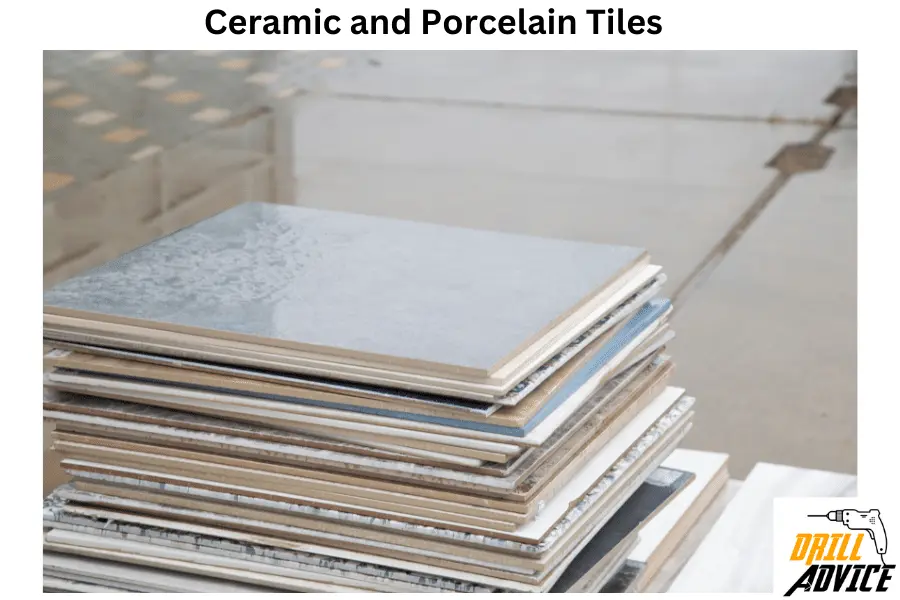
Ceramic and porcelain tiles are popular choices for bathroom flooring due to their durability, versatility, and aesthetic appeal. Both options are made from clay and fired at high temperatures, but porcelain tiles are denser and more durable than ceramic tiles.
When it comes to water absorption and dampness, ceramic and porcelain tiles are excellent choices. They have a low water absorption rate, making them resistant to water damage and preventing the growth of mold and mildew. This makes them ideal for bathrooms where moisture is a concern.
Slip resistance is an important feature to consider for bathroom flooring, and both ceramic and porcelain tiles offer various options to enhance traction. Textured or matte finishes can improve slip resistance, providing a safer surface, especially in wet areas. Additionally, selecting tiles with a slip resistance rating can further ensure safety.
Cleaning and maintenance of ceramic and porcelain tiles are relatively easy. Regular sweeping or vacuuming, along with damp mopping using a mild cleaner, is typically sufficient to keep them clean. Both types of tiles are stain-resistant, making them suitable for bathroom environments.
In terms of cost, ceramic tiles are generally more affordable compared to porcelain tiles. Porcelain tiles are known for their durability and higher price point. However, considering their long lifespan and resistance to wear, both options can be a cost-effective choice for bathroom flooring.
Aesthetically, ceramic and porcelain tiles offer a wide range of designs, colors, and patterns. They can replicate the look of natural materials like stone or wood.
3. Laminate Flooring
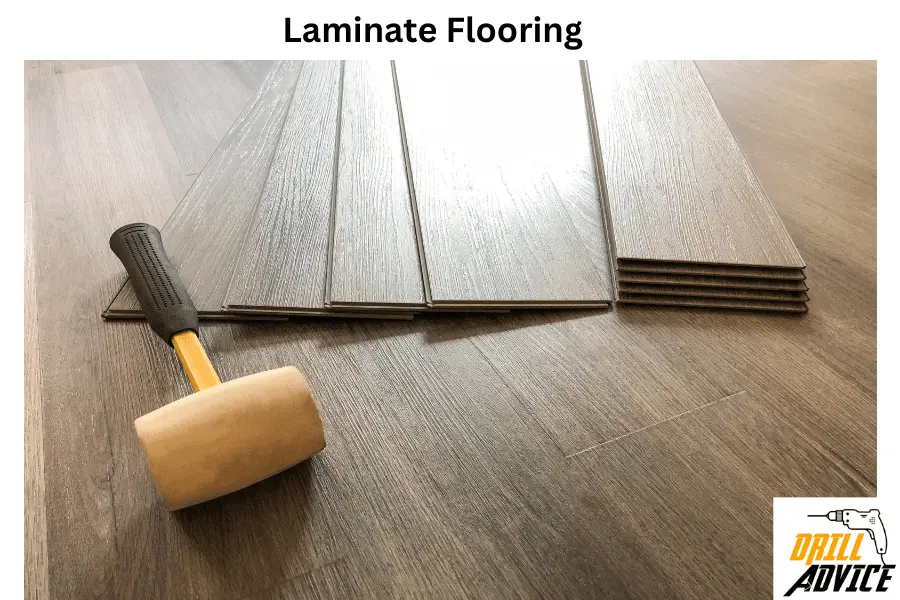
Laminate flooring is a popular choice for bathroom flooring due to its affordability and durability. It is a synthetic flooring product that mimics the look of natural materials like hardwood or stone.
When it comes to water absorption and dampness, laminate flooring is a good option. It has a moisture-resistant layer that helps protect it from water damage. However, it is important to note that laminate flooring is not fully waterproof, and excessive water exposure should be avoided to prevent warping or damage.
Slip resistance is an important consideration for bathroom flooring, especially in wet areas. Some laminate flooring options have textured surfaces that provide traction and improve slip resistance. It is recommended to choose laminate flooring with a slip resistance rating to ensure safety.
Cleaning and maintenance of laminate flooring are relatively easy. Regular sweeping and occasional damp mopping with a mild cleaner are usually sufficient to keep it clean. However, it is important to avoid excess water and standing moisture, as it can seep into the seams and cause damage.
In terms of cost, laminate flooring is a budget-friendly option. It is generally more affordable compared to natural stone or tile flooring. Additionally, laminate flooring is easy to install, which can help save on installation costs if you choose to do it yourself.
Aesthetically, laminate flooring offers a wide range of designs and patterns, allowing you to achieve various looks for your bathroom. From natural wood grains to stone-like textures, laminate flooring can add a stylish touch to your bathroom decor.
4. Engineered Wood Flooring
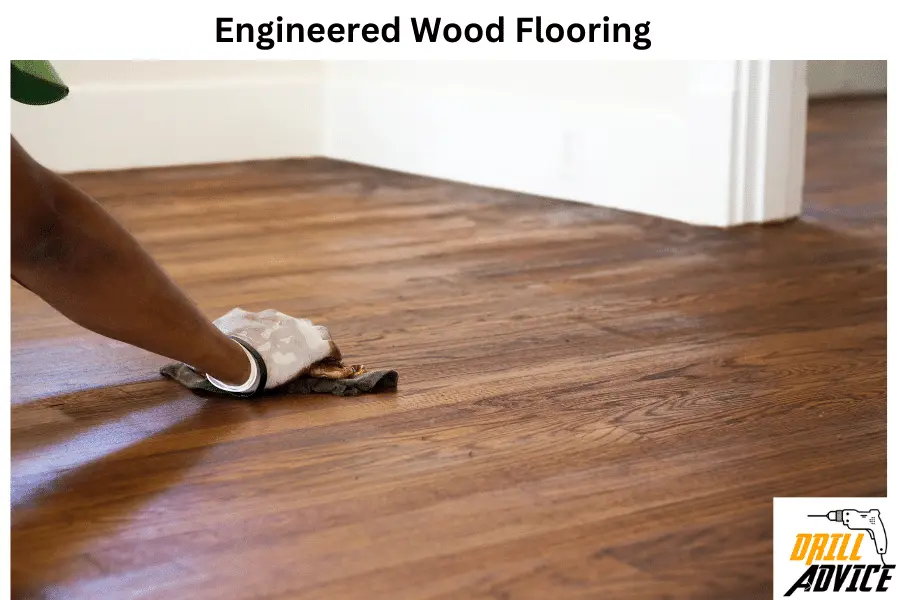
Engineered wood flooring is a popular choice for bathroom flooring due to its combination of beauty and durability. It is made with a real wood veneer layer on top, bonded to multiple layers of plywood or high-density fiberboard (HDF) underneath.
When it comes to water absorption and dampness, engineered wood flooring performs better than solid hardwood flooring. The multiple layers of plywood or HDF provide stability and resistance to moisture. However, it is important to note that excessive water exposure should still be avoided to prevent damage.
Slip resistance is an important feature to consider for bathroom flooring. Engineered wood flooring can vary in terms of its slip resistance, depending on the finish and texture. It is recommended to choose a textured or brushed finish for better slip resistance, especially in wet areas like the bathroom.
Cleaning and maintenance of engineered wood flooring are relatively easy. Regular sweeping or vacuuming, along with occasional damp mopping using a recommended wood floor cleaner, is usually sufficient to keep it clean. It is important to quickly wipe up any spills or excess moisture to prevent damage.
In terms of cost, engineered wood flooring can be a more affordable alternative to solid hardwood flooring. It offers a similar aesthetic appeal and durability at a lower price point. Additionally, engineered wood flooring is relatively easy to install, which can help save on installation costs.
Aesthetically, engineered wood flooring brings the natural warmth and beauty of real wood to your bathroom. It comes in a variety of wood species, colors, and finishes,
5. Vinyl Flooring
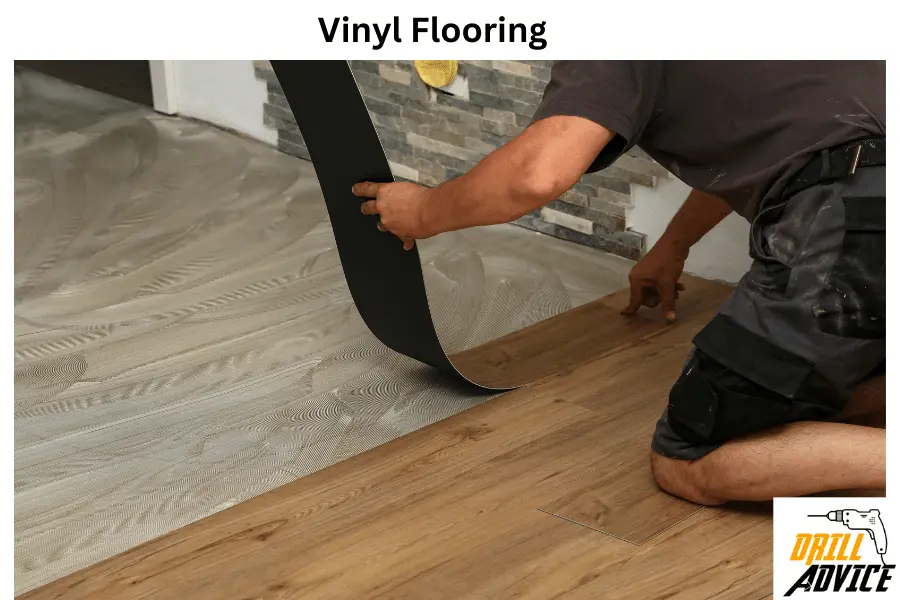
Vinyl flooring is a popular choice for bathroom flooring due to its versatility, durability, and affordability. It is a synthetic flooring material made from PVC (polyvinyl chloride) and other additives.
When it comes to water absorption and dampness, vinyl flooring is an excellent choice. It is highly resistant to water, making it an ideal option for bathrooms where moisture is a concern. Vinyl flooring is also impervious to mold and mildew growth, ensuring a healthy and hygienic bathroom environment.
Slip resistance is an important feature to consider for bathroom flooring, and vinyl flooring offers various options to enhance safety. Many vinyl flooring products come with textured surfaces that provide good traction and slip resistance, even when wet. It is recommended to choose vinyl flooring with a slip resistance rating for added peace of mind.
Cleaning and maintenance of vinyl flooring are incredibly easy. Regular sweeping or vacuuming, along with occasional mopping using a mild detergent solution, is typically sufficient to keep it clean. Vinyl flooring is also resistant to stains, making it a practical choice for busy bathrooms.
In terms of cost, vinyl flooring is one of the most affordable options available. It offers great value for money without compromising on quality or aesthetics. Additionally, vinyl flooring is relatively easy to install, which can help save on installation costs.
Aesthetically, vinyl flooring offers a wide range of styles, patterns, and colors to suit any bathroom decor. It can mimic the look of natural materials like wood or stone, providing a beautiful surface.
6. Cork Flooring
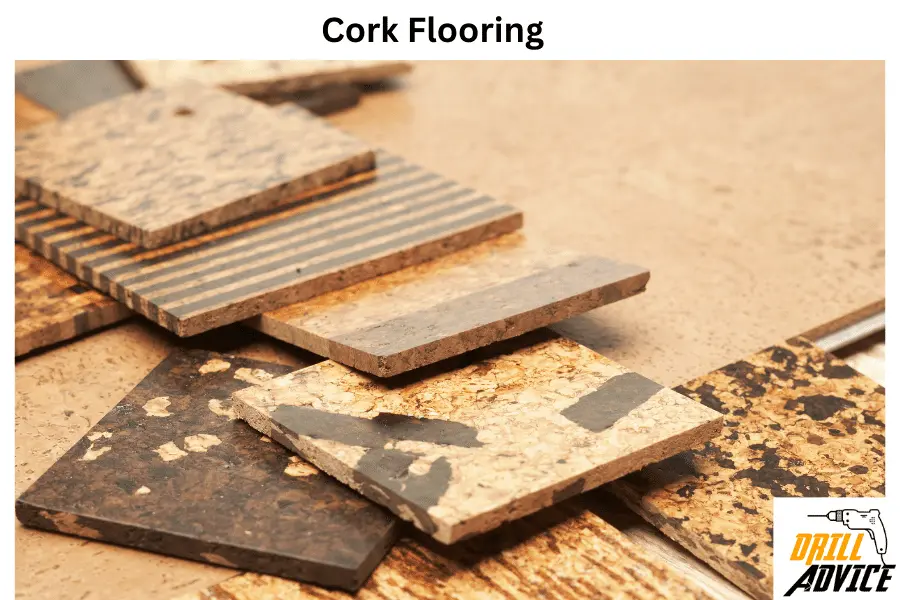
Cork flooring is a unique and eco-friendly choice for bathroom flooring. It is made from the bark of cork oak trees, which is harvested without harming the tree.
When it comes to water absorption and dampness, cork flooring performs well in bathroom environments. It has natural water-resistant properties due to suberin in cork. This makes it resistant to water damage and helps prevent the growth of mold and mildew.
Slip resistance is an important feature to consider for bathroom flooring, and cork flooring offers a good level of traction. Its natural texture provides a non-slip surface, making it a safe option for wet areas. However, it is recommended to choose a cork flooring with a matte or textured finish for enhanced slip resistance.
Cleaning and maintenance of cork flooring are relatively easy. Regular sweeping or vacuuming, along with occasional damp mopping using a mild cleaner specifically designed for cork floors, is typically sufficient to keep it clean. It is essential to avoid excessive moisture and standing water to protect the cork’s integrity.
In terms of cost, cork flooring can vary in price depending on the quality and thickness chosen. It is generally considered a mid-range bathroom flooring option. However, considering its durability and eco-friendly nature, cork flooring offers long-term value and can be a worthwhile investment.
Aesthetically, cork flooring brings a warm and natural look to the bathroom. It is available in various colors and patterns, allowing homeowners to achieve a unique and stylish design.
7. Concrete Flooring
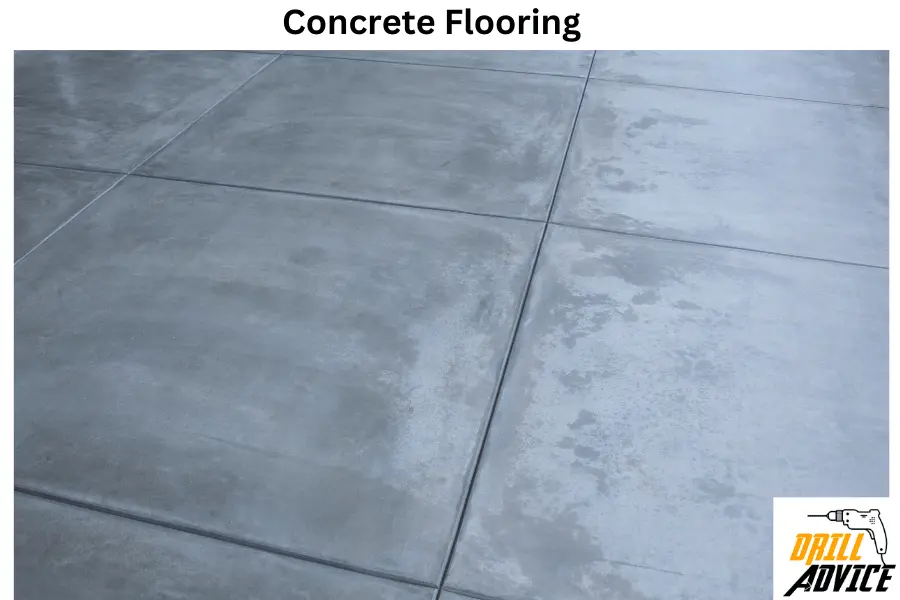
Concrete flooring is a durable and versatile option for bathroom flooring. It is made from a mixture of cement, sand, gravel, and water, creating a solid and sturdy surface.
When it comes to water absorption and dampness, concrete flooring is highly resistant. It is naturally non-porous, meaning it does not absorb water easily. This makes it a suitable choice for bathrooms where moisture is a concern, as it helps prevent water damage and the growth of mold and mildew.
Slip resistance is an important feature to consider for bathroom flooring, and concrete flooring can provide good traction. Its textured surface or the use of additives like aggregates can enhance slip resistance, ensuring safety in wet areas. However, it is recommended to apply a sealer or a non-slip coating to further improve slip resistance.
Cleaning and maintenance of concrete flooring are relatively easy. Regular sweeping or vacuuming, along with occasional mopping using a mild cleaner, is typically sufficient to keep it clean. It is important to promptly clean up any spills to prevent staining, as concrete is porous and can absorb liquids.
In terms of cost, concrete flooring can be a cost-effective option. It is generally less expensive compared to other flooring materials like natural stone or tile. Additionally, concrete flooring can be poured and finished on-site, reducing installation costs.
Aesthetically, concrete flooring offers a modern and minimalist look to the bathroom. It can be customized with various finishes, colors, and patterns.
8. Rubber Flooring
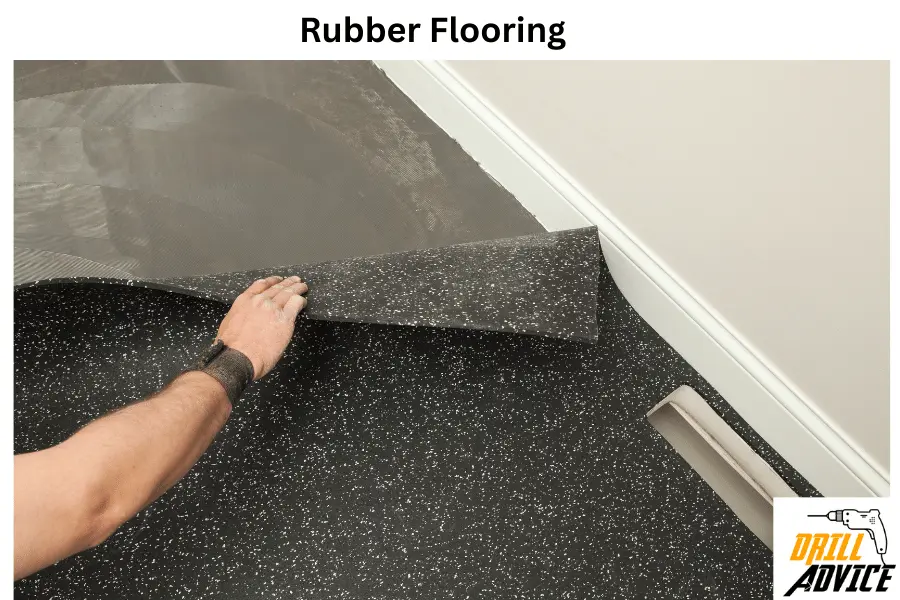
Rubber flooring is a practical and versatile option for bathroom flooring. It is made from synthetic rubber or recycled rubber materials, offering a resilient and durable surface.
When it comes to water absorption and dampness, rubber flooring is an excellent choice. It is naturally water-resistant and does not absorb moisture easily. This makes it highly resistant to water damage and helps prevent the growth of mold and mildew, making it ideal for bathrooms.
Slip resistance is an important feature to consider for bathroom flooring, and rubber flooring excels in this aspect. It provides excellent traction, even when wet, offering a high level of slip resistance. This makes it a safe option for bathroom floors, reducing the risk of accidents.
Cleaning and maintenance of rubber flooring are simple. Regular sweeping or vacuuming, along with occasional damp mopping using a mild cleaner, is usually sufficient to keep it clean. Rubber flooring is also resistant to stains and easy to wipe clean, making it a low-maintenance choice.
In terms of cost, rubber flooring can vary in price depending on the quality and thickness chosen. It is generally considered a mid-range flooring option. However, considering its durability and long lifespan, rubber flooring offers good value for money in the long run.
Aesthetically, rubber flooring comes in various colors and patterns, allowing for creative and unique bathroom designs. It can add a modern and sleek look to the space. Additionally, rubber flooring offers cushioning and comfort underfoot, making it a pleasant surface to walk on.
9. Linoleum Flooring
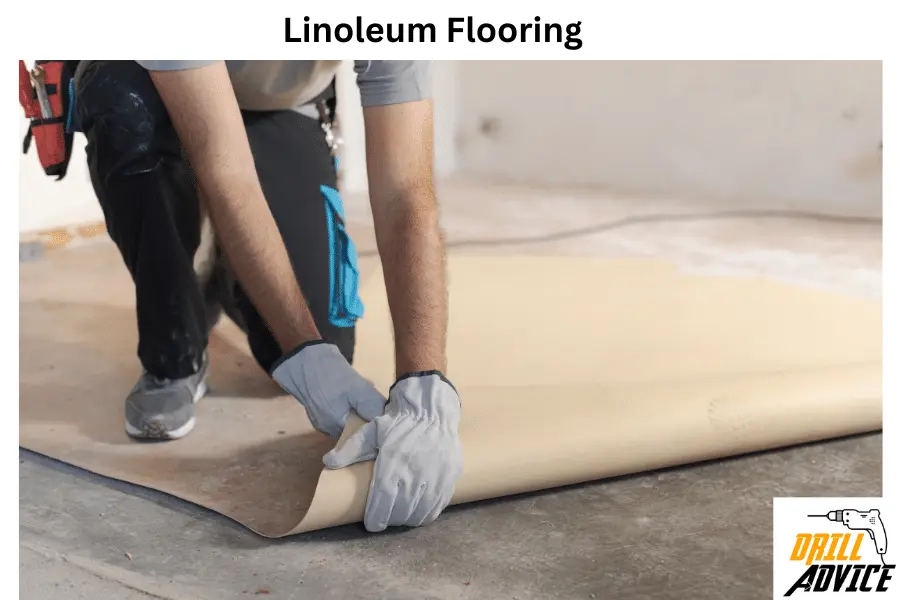
Linoleum flooring is a versatile and eco-friendly option for bathroom flooring. It is made from natural materials such as linseed oil, cork powder, wood flour, and pigments, providing a resilient and sustainable flooring surface.
When it comes to water absorption and dampness, linoleum flooring performs well. It has natural water-resistant properties. It helps to protect it from water damage and prevents the growth of mold and mildew.
Slip resistance is an important feature to consider for bathroom flooring, and linoleum flooring offers good traction. Its textured surface provides grip, reducing the risk of slips and falls. Additionally, some linoleum flooring options come with a slip-resistant finish for added safety.
Cleaning and maintenance of linoleum flooring are relatively easy. Regular sweeping or vacuuming, along with damp mopping using a pH-neutral cleaner, is typically sufficient to keep it clean. Linoleum is resistant to stains and easy to maintain, making it a practical choice for bathrooms.
In terms of cost, linoleum flooring is a budget-friendly option. It is generally less expensive compared to other flooring materials like hardwood or tile. Additionally, linoleum flooring is known for its durability, offering good long-term value for your investment.
Aesthetically, linoleum flooring comes in a wide range of colors and patterns, allowing for versatile bathroom designs. It can
10. Terrazzo Flooring
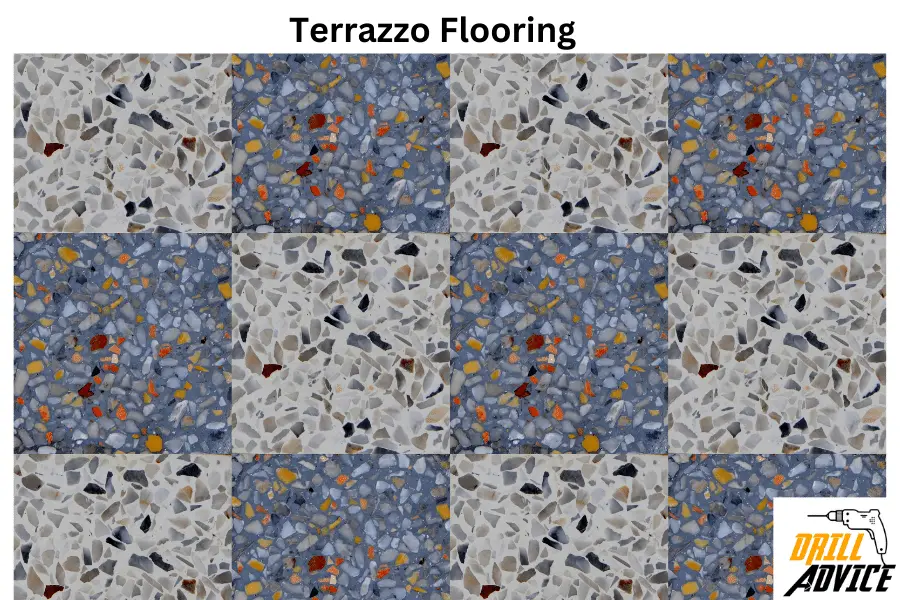
Terrazzo flooring is a unique and visually appealing option for bathroom flooring. It is made from a combination of marble, granite, glass, or other decorative aggregates mixed with a cement or epoxy binder, creating a beautifully patterned surface.
When it comes to water absorption and dampness, terrazzo flooring is highly resistant. The dense and non-porous nature of the material makes it impervious to water damage. This helps prevent moisture-related issues, such as mold and mildew growth, making it suitable for bathrooms.
Slip resistance is an important feature to consider for bathroom flooring, and terrazzo flooring can be customized to provide varying levels of traction. By incorporating textured aggregates or using a non-slip sealer, the slip resistance of terrazzo flooring can be enhanced, ensuring a safe and secure surface.
Cleaning and maintenance of terrazzo flooring are relatively easy. Regular sweeping or vacuuming, along with damp mopping using a neutral pH cleaner, is usually sufficient to keep it clean. It is important to avoid using abrasive cleaners or rough scrubbing tools, as they can damage the surface.
In terms of cost, terrazzo flooring is considered a higher-end option. The price can vary depending on the type of aggregates used and the complexity of the design. However, its durability and timeless aesthetic make it a worthwhile investment for long-term value.
Aesthetically, terrazzo flooring offers a wide range of design possibilities. With its vibrant colors and unique patterns, it can add a luxurious and artistic touch
What are the 6 Ways to Damage Bathroom Floor?
- Damage by Water leaking – Leaky pipes, overflowing bathtubs or toilets, and poor sealing around fixtures can lead to water penetration into the bathroom floor.
- Wear and Tear Surface Damage – Heavy foot traffic, dropping heavy objects, or frequent cleaning with abrasive substances will damage the bathroom floor.
- Chemical Damage – Harsh cleaning agents spillage of aggressive substances like bleach or ammonia can damage the flooring surface.
- Thermal Stress – The bathroom floor consists of different materials. When it is subjected to heat, it will expand in different proportions. As a result of this surface will be cracked and damaged.
- Structural Issues – The bathroom floor can be damaged due to external forces to the structure due to the Settling of the building, inadequate subfloor support, or poor construction.
- Humidity and Moisture – Poor ventilation and high humidity can improve the dampness in the bathroom.
How to Protect Bathroom Floor?
A bathroom floor can be protected using below 7 facts
- Do regular cleaning
- Use bath mats
- Increase ventilation
- Check and fix the leaking
- Seal the grouts
- Use anti-slip treatment
- Applying protective coating on the floor.
